Where the Worlds Meet: Mia Cross and Daniel Zeese
This March in the Main Gallery we are featuring Core Artists Mia Cross and Daniel Zeese. Their exhibition, Where The Worlds Meet, will run from March 4-March 29. There will be an opening reception on Friday March 6 from 5-8pm and and Artist Talk on Friday March 27 from 6-8pm. Below the artists interview each other about their work.
Daniel Zeese
MX: Can you tell me a little bit about your Moon World? Would you want to exist there instead of here?
DZ: So I have been working on this project of thinking of a world where the moon is a cube. The moon is a really charged object and it holds a lot of power over us that we don't initially jump to when we think of it. Not only ideas of gender, religion, and time, but ideas of fullness or fulfillment, or emptiness. I did this drawing of the moon as a cube, and it totally changed how I began to understand these things that I have always thought of as truths.
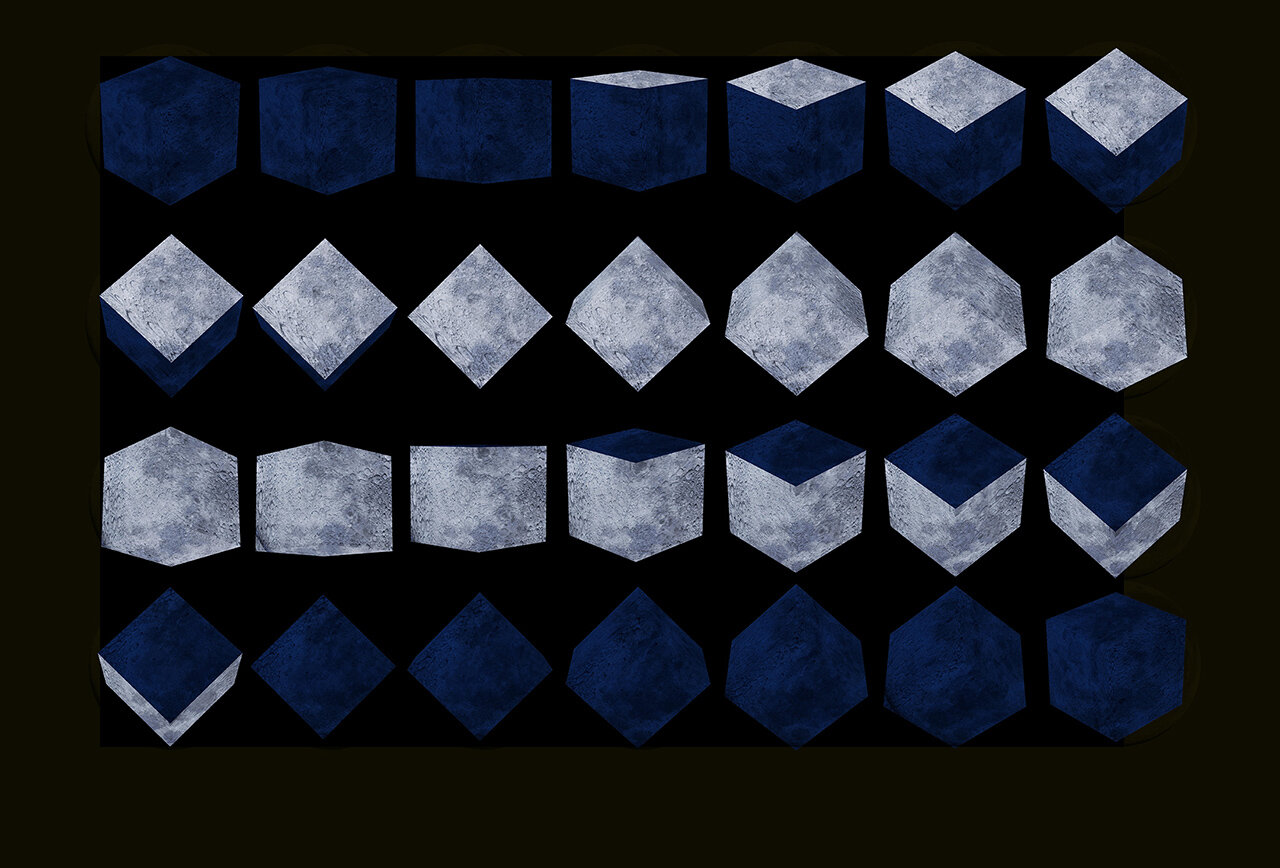
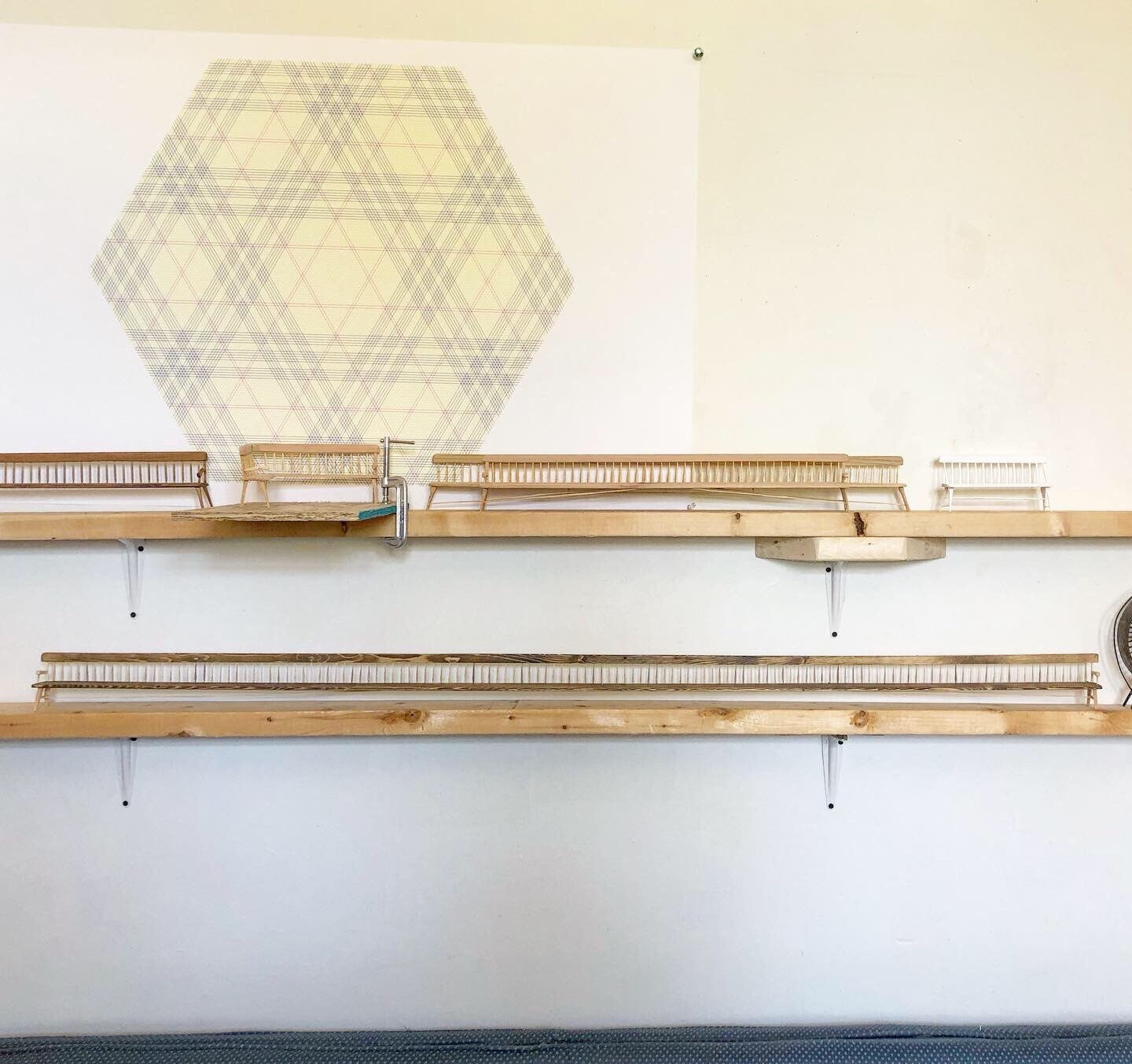
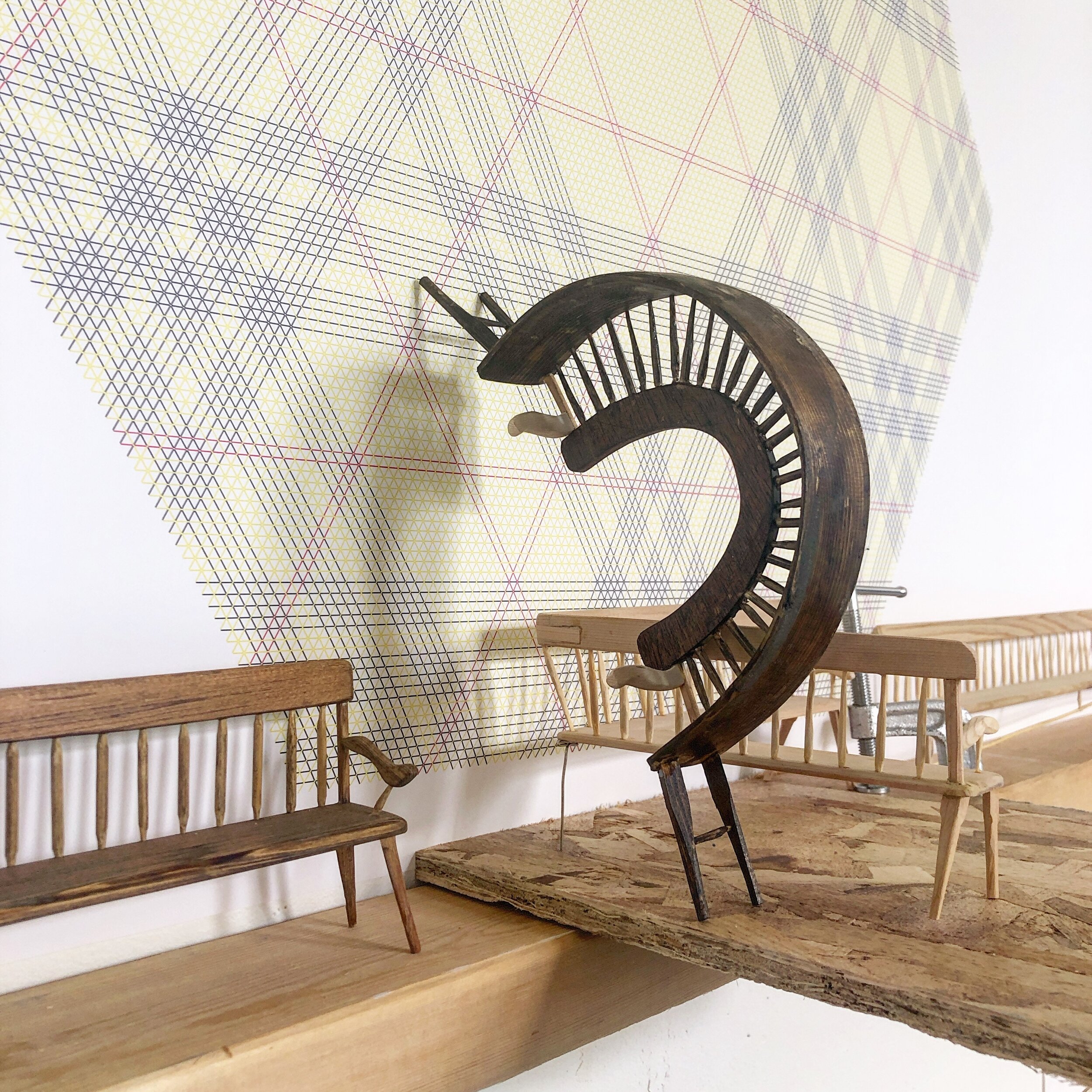
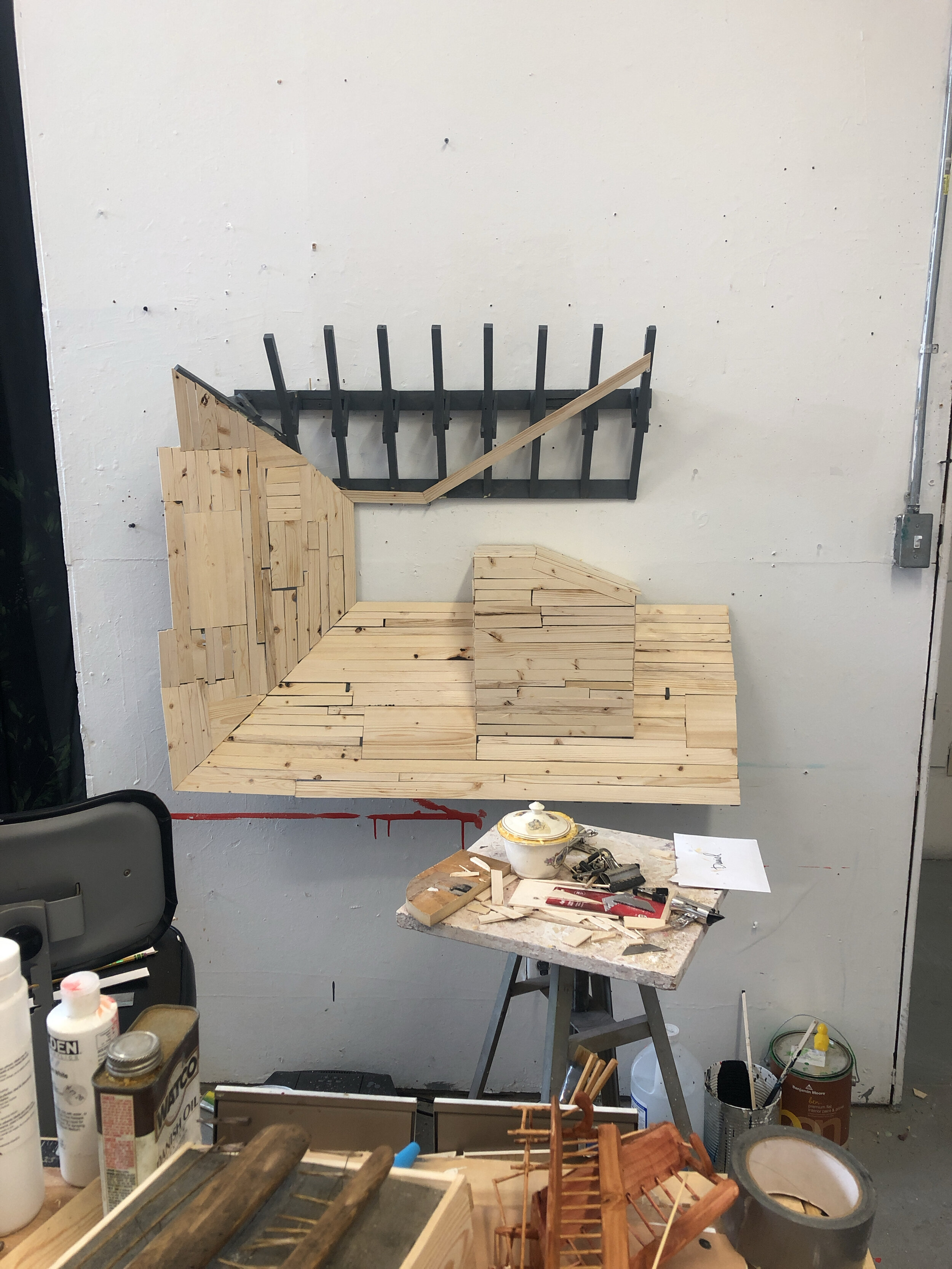
The work that will be in ‘Where the Worlds Meet’ is not moon based, but they exist in that world. So to the idea of wanting to exist there instead of here, I kind of am. By taking these forms that are rooted in something we consider true, or vernacular to many different places, and breaking them down to allow them to exist as something else, I am not only questioning the forms, and the craft of those forms, but the institutions they belong to.
MX: What is the worst part about creating new work? What is the best, most rewarding part?
DZ: The worst part is trying to talk about it. I'm living in this weird world of an artist residency, and having a new idea also means that people are going to walk into my studio before I have fully realized it. I can’t help but look at my work through someone else's eyes when that happens, or start to explain it in a language that is for them, rather than for the ideas that aren't really fully formed. That's not always the case, but I ask a lot of my viewers to buy into this idea of the moon as a cube, and then having them jump to looking at these models of 16th century benches that are a bit crazy… If the new work isn’t ready the conversations can spin out of control. The most rewarding part is when the work is at a point when conversation doesn't spin out of control.
MX: How much exploration and spontaneity comes into your practice? Or if you have an idea, are you a stick to the plan-man and see it through?
DZ: I'm not much of a planner. It's funny to be making these little things, but still feeling like my whole mind and body is engaged in the moments of making. There is the repetitive aspect of whittling the wood, but a lot of decisions are constantly being made. At the beginning of the project, I was sticking to the plan, trying to recreate a form over and over using some semi strict guidelines, like the only material I am using is pine 2x4s. Then I tried for specific forms, or lengths, then specific alterations and alterations for specific spaces. I would ask myself, what should this look like if it's a model of a memorial for specific people, or conversation, but that's not something I could really plan ahead for, it just kinda comes out in the process of making them.
MX: What can you pinpoint about our work that makes it work so well together?
DZ: I think our domestic spaces are really similar, and that is to say that the spaces we move through are too. So we are probably interacting with color and objects in similar ways on the daily. I mean, we bought a couch together. I know people who can't even make that decision on their own. The types of things we surround ourselves with must influence our studio practices. I can't speak for you, but I think my work has changed a lot over the course of knowing you. Even though it takes lots of forms, I see it as a single aesthetic, kind of like my apartment.
Mia Cross
DZ: Tell me the story about your painting of your dad. Is it important for us to know what your stories are?
MX:For a while I’ve been intrigued by the aerial views of tulip fields around the world (I have never seen one in person, but it is on my list). I like how they relate to my color study work, and that these tulips are beautiful things that sprouts from the earth, but from up high, due to the planning/planting of humans, the fields can look super geometric. In this “Painted Place” world, I have been imagining that every individual has a role that revolves around nature, paint, or both. For this piece, I decided to make my dad the focus, giving him the role of the artist who paints the flowers from blank to color everyday. I chose him partly because he got these awesome new red glasses and partly because I watched him paint as I was growing up and thought it would be special to place him in this magical role. My paintings often rely heavily on narrative but it isn’t important to know that the man is my dad or that this place has these special jobs. I do hope I provide enough context to the viewer that they start to imagine their own story. Every piece of paint I leave is a clue into my story, but there is always joy in that these things can be interpreted in unique ways by the viewer.
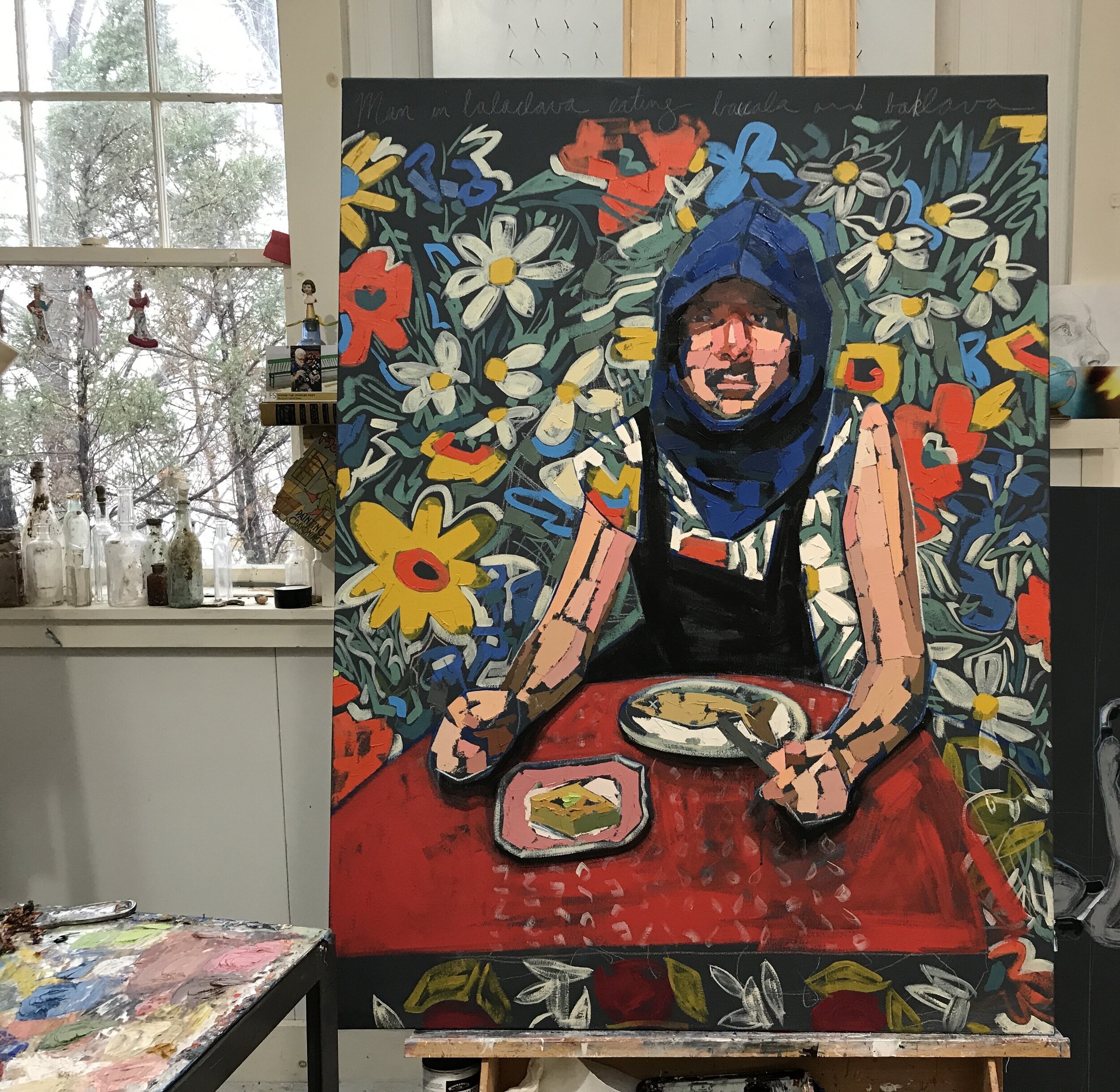
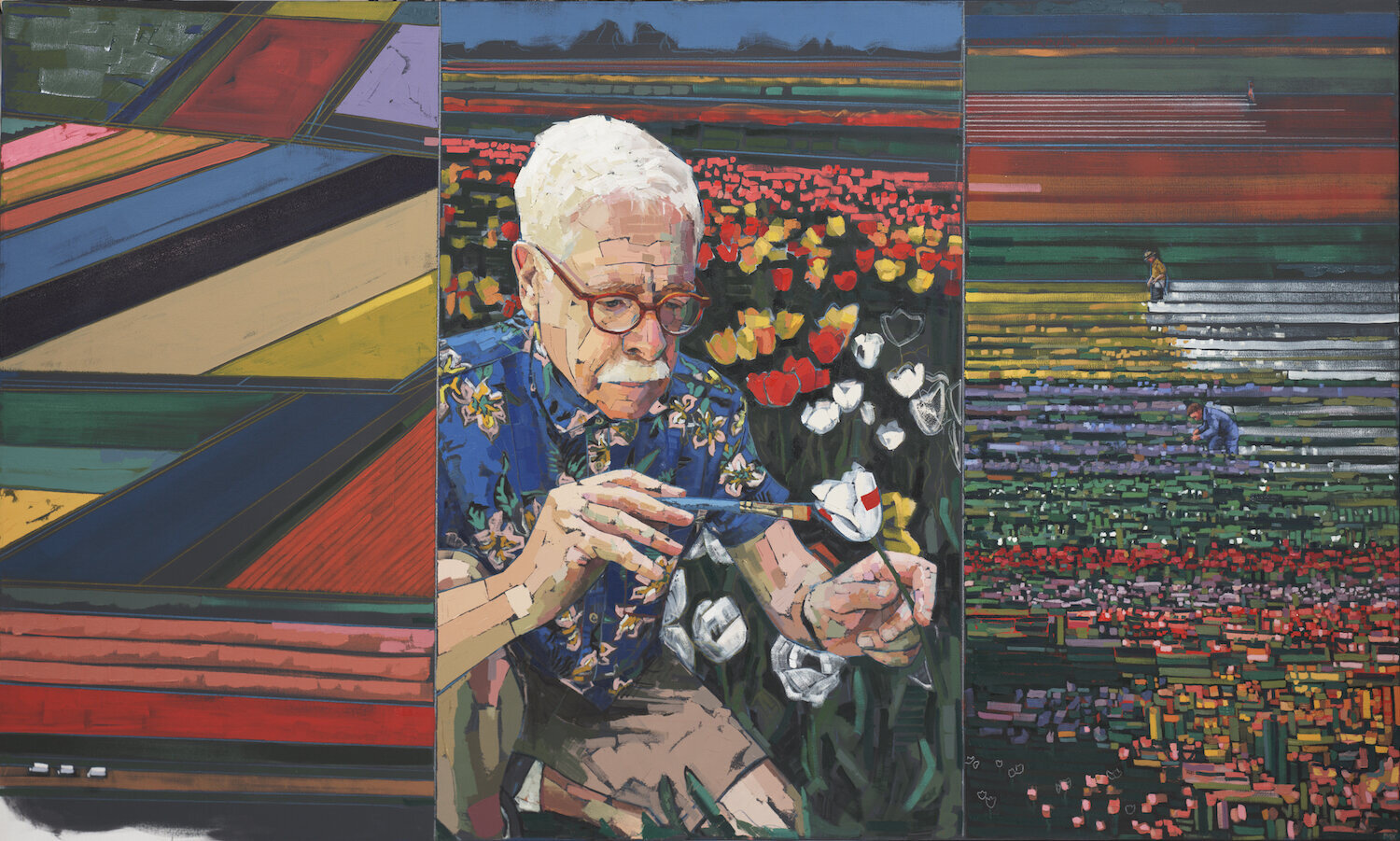
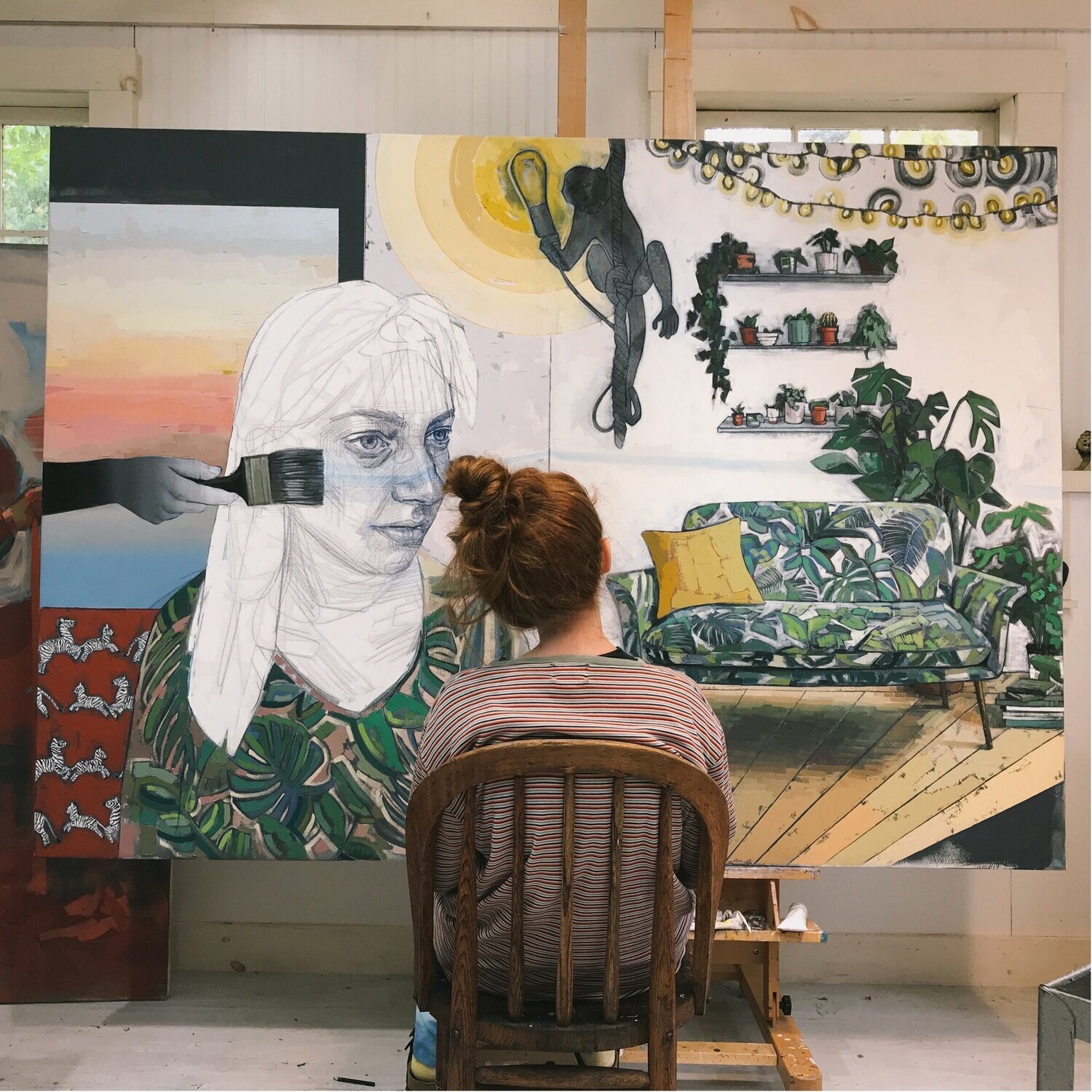
DZ: I think it's so funny that we both came up with these worlds in the same place. Are there things about “The Painted Place” that have taught you about the world we live in?
MX: I think it is funny too =P. The Painted Place was created in direct comparison to this world. I took so much inspiration from the Earth, the animals, the colors, the people. But since I also feel we disrespect this earth in a lot of ways, “The Painted Place” is essentially a possibility of what this earth could be if we all learned to respect it and treasure it. And then there are some more fantastical, imaginative elements. Like some people are born blank and can be painted, or that people communicate through swoops and marks. But I think there are just as many fantastical things that happen on our Earth. I realized afterwards that I created the Painted Place so I could take limitations off of my paintings that I would unknowingly restrict myself with beforehand. I sort of thought “If anything can happen in this new world, my paintings can do/be anything too.” But, I still want to push this concept much further than I have. **Wow I just read what you wrote about your Moon World and we created these worlds for such similar reasons!
DZ: I remember a birthday card you gave me once that reminds me a lot of those mixed media paintings we did of our legs… I don't know if that was part of our thought process. I know you have lots of fun/good/funny/thoughtful ideas, but how do you know when to move them to being immortalized into a painting?
MX: A lot of my works start with a flash of an idea, or a title that I want to flesh out on canvas. If it is a painting that I think is a bit funny, I have to make sure the joke sticks and is still funny to me a couple weeks later. It takes a lot of time for me to build and prepare a canvas, gesso it, so I want to make sure whatever I put on there is worthwhile. And if I decide it’s not worth spending the time, I will draw it as a comic in pen or pencil in my notebook. But depending on my mood and the times, I’ll be pulled to want to make a beautiful painting, or a patient painting, or an exciting painting, or maybe there is a face I just really want to paint. Typically I’ll do a very quick sketch, or jot an idea into my phone, and if I keep thinking about it, it’s time to get it out and paint it.
When I am preparing for a show I get really immersed in a concept and can ride that wave of “Ohh I want to make this next and this and this to build my narrative.” If I am more in commission season, sometimes I’ll be struck by more “one-off” ideas that I’ll want to get out of my head. If I am feeling really inspired and it sticks for an hour, I try to push the commissions aside, see that idea through pretty quickly and create it.
DZ: I know you are busily working to finish two new paintings for the show. What did you know before the painting started and what becomes revealed as you are doing it?
MX:The two new paintings I made for this show, “Painted Lady, Painted Lady, Painted Lady” and “Man in Balaclava Eating Baccala and Baklava” I was thinking about these phrases over and over and how words can be so funny sometimes. The titles are such an integral part of the concept/imagery, for the first time I put the titles right on the front of the canvas. I think I would like to make more of these “funny” paintings even if they are just funny to me. In the future, I want to publish a book of ideas like this called “My Mom Thinks I’m Funny” because she laughs at everyone’s jokes even if they aren’t funny because she is very nice. With the painting of you, the “Man in Balaclava Eating Baccala and Baklava” I tried to be more loose and just have fun with it at every stage. Sometimes with the figurative work I can get bogged down by the small fussy details, so this time I’m like “Ok I don’t want to paint a perfect baccala, I am going to paint the idea of a baccala.”
DZ: What can you pinpoint about our work that makes it work so well together?
MX:I don’t know why our work works so well together, because even as we have evolved and worked in different series it still fits. I think because we appreciate form, and color, and whimsy and we like to walk this line between things. Your work always inspires me because it is so thoughtful and just very pleasing to the eye. I really appreciate moments or aesthetics in history that have this ornateness, wonderful textures, are beautifully crafted, are made of fine materials (love a good floral). On the other hand though, I also appreciate simplicity and minimalism. Ok I just read what you wrote, and I think that is true. We have a very similar sense
